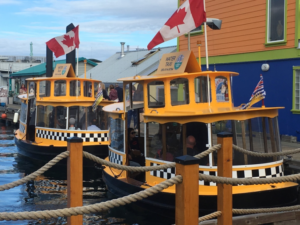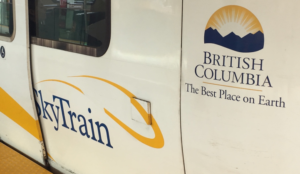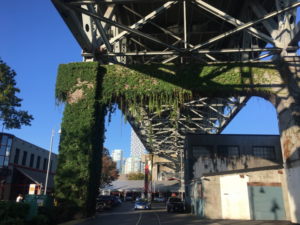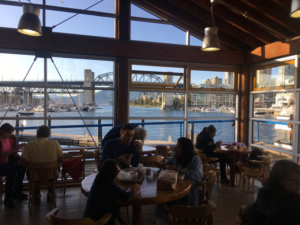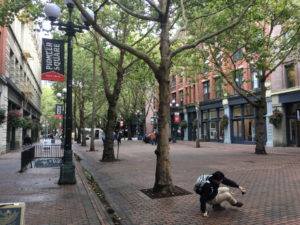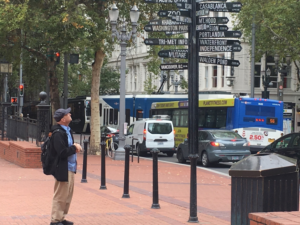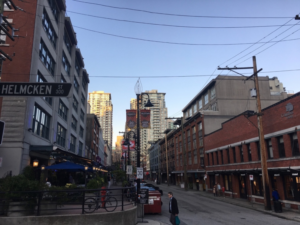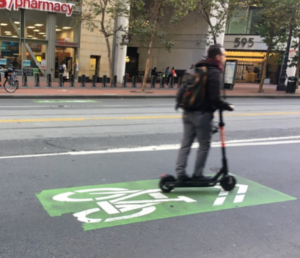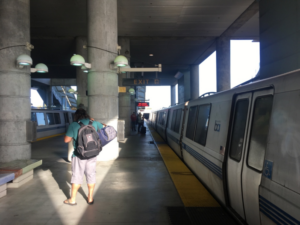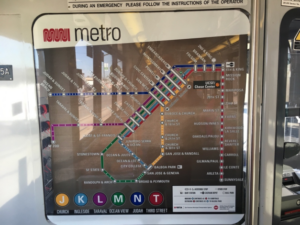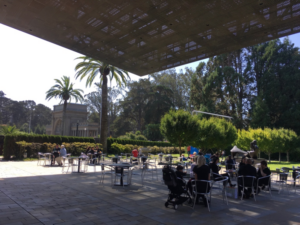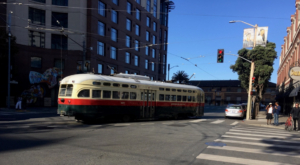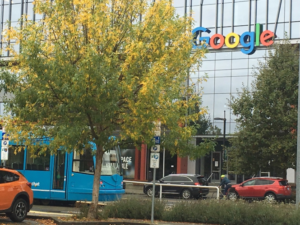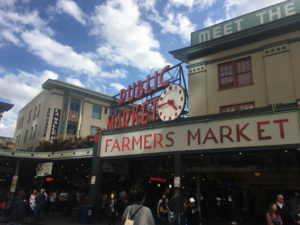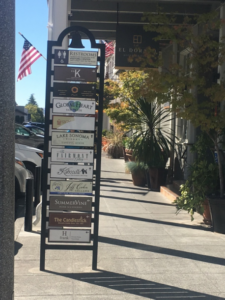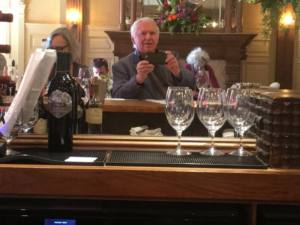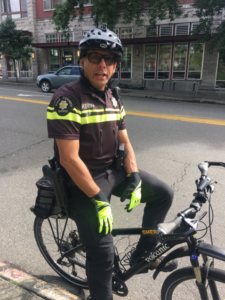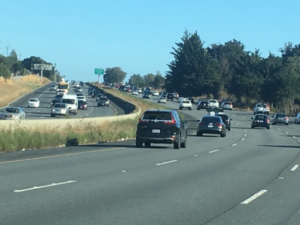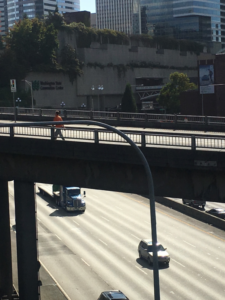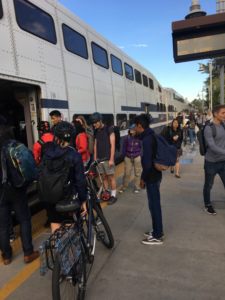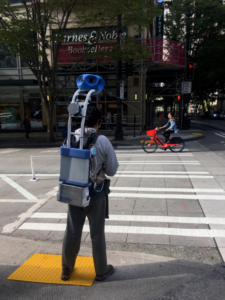Connecting places
In our three weeks of travelling between Vancouver in Canada and Palo Alto in Northern California we set out to experience a range of types of transport. Transport systems not only shape the character of cities, and affect how well communities work together, but they also have measurable impacts on pollution and indirectly on global warming. They are highly dependent on geography and population densities but also on political values or priorities. The variety of rapidly growing cities along the way from Vancouver to Palo Alto provided an excellent opportunity to reflect on how to make cities work better through investment in transport systems.
Since I was a student at Stanford Business School fifty years ago cities have sprawled out far further, and the residential population of the West Coast has become much more dispersed. For example, Vancouver has some 600,000 residents in a sub-region of 2.5 million. For the Expo in 1986, the city invested in an excellent driverless transit system called the SkyTrain which now connects new developments over three lines and 60 miles of track. Attractive little water taxis, ferries and seaplanes connect the main attraction and residential areas.
Taming the car
The driverless Skytrain lines in Vancouver are extensive, fast and frequent and very easy to use. High density housing schemes are springing up around some of the new stations. The many islands and waterfront locations such as Granville Island are well-connected with attractive little ferry boats, and we later took the fine ferry from Vancouver Island to Seattle. Canada seems to value public amenities. Yet the comfortable government supported Amtrak train runs only four times a day between Seattle and Portland and once to Vancouver, resulting in the service being used primarily by tourists not commuters.
Portland has 650,000 residents in a metropolitan statistical area of 2.2 million, and the city has grown as fast as the surrounding counties. Portland is kept compact by the State of Oregon’s Green Belt, a unique application of spatial planning in the USA. It also has a European class public transport system which includes MAX (the Metropolitan Area Express), which has become a model for other cities. This serves three counties through what is known as TriMet, a public agency running all forms of transport. In contrast San Francisco boasts a population of 900,000 but over 7 million live in the wider Bay Area, and congestion is rife. BART (the Bay Area Rapid Transit) has not had the impact that was expected.
Connectivity and congestion
Long commutes in cities such as San Francisco result in levels of congestion on the main roads that are quite alarming. The delays cause stress, while the carbon emissions and tyre wear create pollution and harm the health of those who spend most time on the streets. Opposition to extending the Bay Area Rapid Transit (BART) line Southwards means that almost everyone drives in the San Francisco Bay Area, though Uber taxis and Google buses take some of the load at peak times. Apparently, a proposal to open up a river boat to take workers from San Francisco to Google’s office was opposed on environmental grounds, and the buses that Google runs have come in for a lot of criticism.
When we were staying in Palo Alto opposite Stanford University Esther and I were driven to see the new ‘palaces’ of the IT titans of Facebook, Google and Apple. These have clustered in a multiplicity of buildings around Stanford and Palo Alto. There are other clear concentrations: for example bio-medical firms locate near the Veterans Hospital to make experimentation easier and more economic. 17 miles South of Palo Alto lies San Jose. Once known for the song ‘do you know the way to San Jose?’, it is now dominated by electronics firms and the homes of many ‘IT workers’, and is extending its own metro system. Los Angeles is yet another transport hub, which is investing in transit schemes because its freeways are jammed, and its air is said to be unbreathable.
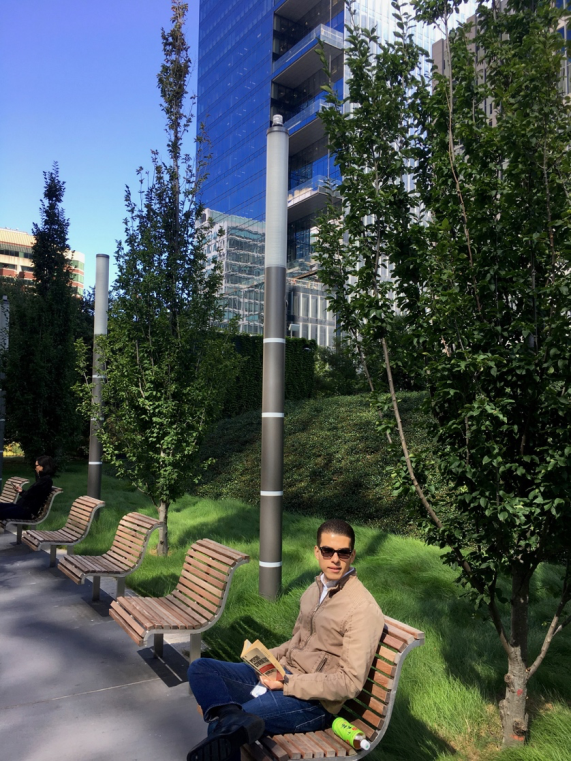
In the centre of San Francisco, clustered around the magnificent Salesforce Park stand the towers of the companies that have survived the dot.com boom. The names of familiar people-facing computer ‘apps’ such as Twitter or Survey Monkey are located where young staff can walk, bike or scoot to work. The park occupies the roof of the new transit terminal, which had only opened a couple of months before our visit and is accessed by escalators or on a gondola or cable car. But many more staff seem to get into cars in their spacious garages and drive to car parks under their offices without ever encountering the realities of urban life. There are only a few suburban passenger railway lines such as the Caltrain, which we used to get to San Francisco Airport from Palo Alto before changing to BART. The BART train may look modern but is poorly signed with complex ticket machines and does not offer a better alternative to the car or Uber taxi for most people.
San Francisco is known throughout the world for its cable cars. It also has a fine fleet of historic trams from different cities running past the main visitor attractions along Embarcado and the waterfront. The predominantly electrically powered buses in San Francisco were frequent and very easy to use, with friendly drivers and countdown displays. But the occasional deranged passenger can be unsettling. People sleeping in bus shelters or on the pavements were another disincentive to using public transport. San Francisco uses excellent trolley buses and there are count-down times in bus shelters and road crossings. Frequent electric buses also serve Stanford’s spread-out campus from Palo Alto’s railway station, but other connections are unsatisfactory. Public transport in California is largely left as a service for the poor or the tourist.
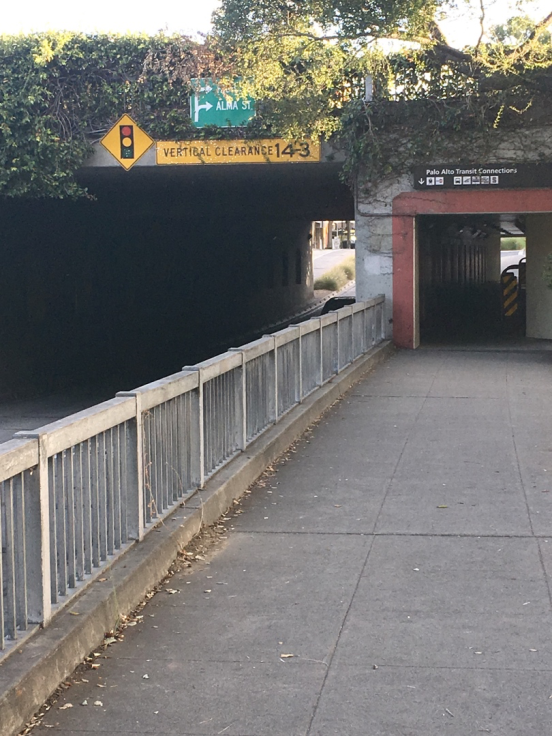
In the areas they cover the trams or street cars work well but are slow over longer distances with frequent stops, and Transit Oriented Development is rare. A major housing development of 5,000 homes on 300 acres of former industrial land includes a hospital at Mission Bay looks very promising but has taken over twenty years. There are few other signs of development on the largely vacant land still occupied by the port, and remarkably few tower cranes compared with an equivalent area in London. It seems that land assembly is too difficult, or the political will may be lacking to contend with the opposition that any proposal generates.
Congestion is a consequently a major challenge throughout the Bay Area. Four-lane freeways and flyovers are jammed with traffic crawling along. Even if the cars are much smaller than they were fifty years ago, and often electric, the environmental and health costs are huge. Autonomous or self-driving cars would make little difference. Interestingly where people once lived in Palo Alto’s spacious suburbs and worked in San Francisco, the dominant movement is now the other way. Even more travel across the Golden Gate and Bay Bridges going North and East. While new apps for telephones should make ride sharing much easier, and priority is given on some freeways to people sharing a car, so long as parking is easy people with money will prefer to use their cars (or ride electric bikes for more local trips).
A thousand kilometres further North or just over two hours by plane lies Seattle, outside which Bill Gates and his Microsoft empire are based, and where Jeff Bezos’s Amazon is headquartered. Largely known for its rain and waterfront, in part through films such as Sleepless in Seattle, Seattle is a high tech success story. Formerly dependant on Boeing, who manufacture aircraft there, the old joke was ‘Could the last person leaving Seattle turn off the lights.’
The story of Seattle’s renaissance is brilliantly told in MOHAI (Museum of History and Industry), which illustrates the cluster of companies that are linked together in the fourth industrial revolution. The museum reuses an old Navy building opposite the new housing and office on South Union Lake, once an area of old factories. Next to is the Centre for Wooden Boats where we talked to people enjoying making their own from kits. High accommodation and staffing costs are said to be causing the IT giants to set up further afield from their origins. Nearby apartments are being leased or rented out in residential towers offering social facilities for busy workers. The cluster of new offices and housing springing up around South Lake Union a short new tram ride or walk from the centre. Spacious show flats provided a taste of what well-paid staff are looking for and attempts are being made to create a sense of community.
Seattle is also known as the home of Amazon. Hardware once made locally is now made in China and the Far East and shipped into the giant ports along the West Coast, and then trucked out. However, in a fast-moving world, activities are shifting once again. Production is distributed further afield, so that, for example Elon Musk is making batteries for his Teslas in the largest building in the world in the deserts of Nevada. This is partly financed from the money he made from the financial transaction app. PayPal, which again started in Palo Alto. Undoubtedly the West Coast cities have benefitted from their excellent ports and links to the Far East.
We took an Amtrak train from Seattle to Portland, both of which have superbly restored stations. Railway services are quite unreliable as passenger trains must give way to long, slow freight trains. I recalled the President of Southern Pacific telling a class at Stanford fifty years ago that he only wanted to carry passengers in six foot boxes, and it seems that rail is not yet seen as a better option to driving. A newspaper article on the recently reopened private train line over 70 miles from Sonoma to a ferry point across the bay from San Francisco’s downtown area said it is suffering financially from low usage outside peak hours because the failure to build housing near the stations. The idea of a high speed line to Los Angeles seems fanciful.
Travel is so poorly integrated that the private car still dominates movement. Significantly perhaps the taxis we used in Vancouver, which bans Uber, were most friendly and well-informed, in contrast to some others we used. IT provides instant contact almost everywhere, and people seem to be looking at their phones much of the time. But the casual encounter or even a meal with friends is difficult outside a few favoured places. When walking is only used for exercise, town centres have collapsed to be replaced by home delivery systems.
We spoke to traffic cops on pedal bikes in Seattle who patrol the transit corridors as they say this is where most crime is concentrated. Elsewhere we saw little evidence of public security. The link across El Camino and then under the railway line from the university to the shops and restaurants in Palo Alto is intimidating and lacks proper lights and kerbs. Hotels are designed for motorists.
Mega-commutes from the new suburbs and sub-divisions of more than 90 minutes each way help explain congestion on the roads, and the decline of local shops. ‘Edge cities’ have been developed where commuters go to shop or take away fast food. But they have not led to housing development where it is most needed, even where transport connectivity has been upgraded. This is not helped by political fragmentation.
So despite its wealth, and huge innovations in technology, the West Coast generally has not yet succeeded in linking up development and transport. Investment in infrastructure and housing is lagging far behind economic development and jobs. IT and public engagement in planning has not yet enabled public transport to compete with personal transport. Housing will therefore form the next postcard in this series.

